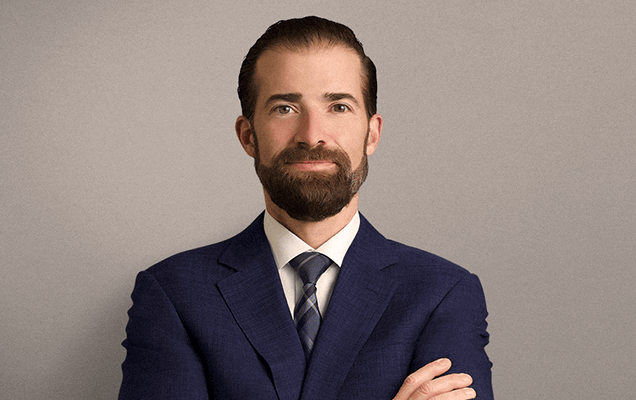Glioma vs. glioblastoma, stage vs. grade, chemotherapy vs. radiation therapy — there are many terms related to your diagnosis that sound similar, which can become confusing. One way to be more comfortable with your upcoming treatment is to develop an understanding of the terminology, in turn helping you better understand your treatment options.
Below is a review of the difference between a glioma vs. glioblastoma, the different grades of gliomas and the treatment options for each. If you find you still have questions, or perhaps new questions have come to mind, be sure to discuss them with your doctor at your next visit.
Grades of Gliomas
First, it might be helpful to review what “grade” means in reference to tumors. Grade is a way of classifying a tumor based on how aggressive it is. You may be familiar with the term “malignant.” The more aggressive a tumor is, the more malignant it is, meaning it is growing more rapidly. You may also be familiar with the term “stage,” which will not be discussed here other than to say it refers to how far the tumor has spread.
With glioma vs. glioblastoma, the easiest way to understand “glioma” is to think of it as a blanket term. “Glioma” is a general way to refer to a tumor arising from the glial group of cells within the brain, which provide support functions to neurons throughout the brain. Because “glioma” is older terminology, your doctor may or may not use it.
There are four grades of glioma, and each has different types of cells present and different treatment strategies. A glioblastoma is a grade IV glioma, which is the most aggressive form. This means that all glioblastomas are gliomas, but not all gliomas are glioblastomas.
Grade I
Grade I gliomas (pilocytic astrocytomas) are rare in adults and typically occur in pediatric patients. Because these tumors are grade I, they are the least aggressive and will typically grow very slowly. Grade I tumors are relatively benign, but they might put pressure on an area of the brain, leading to symptoms.
Grade II
Also known as low-grade glioma, grade II tumors are the most benign glioma typically found in adults. If your glioma is classified as grade II, that means it is growing slowly. However, it could still lead to symptoms by impinging on areas of the brain, and there is the potential that it may transform into a grade III and grade IV tumors if not treated. This is why, in spite of the “low-grade” label, it is still important to work with your doctor to develop an appropriate treatment and/or monitoring plan.
Grade III
A grade III glioma, or malignant glioma, is a tumor made of anaplastic cells, which means they no longer look or function like the healthy version of the cells they are derived from. These tumors are very aggressive and require immediate treatment to prevent growth and/or transformation into a grade IV glioma.
Grade IV
Glioblastoma multiforme, a grade IV glioma, is very aggressive and has the potential to spread very rapidly. This is the most common form of primary brain tumor, but it is also the most destructive. Glioblastomas should be treated as quickly as possible because they grow so rapidly.
We are more than surgeons,
we are your support system.
Treatment Options for Each Grade
The treatment for gliomas is relatively standardized no matter where you receive medical care. You can expect your treatment plan to follow a general path, depending upon the grade of your glioma.
Grade I
For asymptomatic grade I gliomas, your doctor may recommend a watch-and-wait protocol. However, many doctors will recommend surgery, especially if your tumor is in an easily accessible location. Following surgery, you will undergo radiation therapy to ensure any remaining tumor cells are destroyed. Your doctor may recommend radiation alone if you are not a candidate for surgery.
Grade II
If you have a grade II glioma, your doctor may choose to delay surgery and monitor your tumor for transformation or growth. However, if your tumor is surgically accessible with low risk, surgical removal may be the treatment of choice for most doctors. Again, this will be followed by radiation therapy, or radiation may be used alone when surgery is not an option. Some patients will benefit from chemotherapy, particularly if the tumor is classified as high risk.
Grade III
For grade III gliomas, monitoring is typically not an option. These tumors are faster growing and need to be treated more aggressively. Your surgeon will remove as much of the tumor as safely possible, followed by six weeks of radiation therapy, then up to a year of chemotherapy. You will be given a prescription for temozolomide (Temodar), a pill taken once daily that is generally well-tolerated. You may also be a candidate for clinical trials that explore emerging treatment methods.
Grade IV
Because grade IV gliomas are the most aggressive, your treatment will also be more rigorous. Similar to those with a grade III diagnosis, you will undergo surgery, followed by radiation therapy for six weeks, but your chemotherapy will begin concurrent with your radiation. Again, clinical trials may be an option, and if this interests you, be sure to bring it up with your doctor.
You can read our in-depth glioblastoma treatment guide here.
The Healing Process
Now that you have a better understanding of glioma vs. glioblastoma and the treatment options for each, hopefully you feel more comfortable with the process. This healing time is going to include many visits to your doctor, monitoring and possibly retreatment, and your comfort is paramount.
Remember that a positive attitude can help your body heal. At any point, if you have concerns or questions, bring them up with your doctor. He or she is there for you on this road to recovery, and you are not alone.

About Dr. Anthony D'Ambrosio
Dr. Anthony D'Ambrosio is an accomplished neurosurgeon in North Jersey and a proud member of Neurosurgeons of New Jersey practicing primarily out of their Ridgewood office conveniently located on East Ridgewood Avenue. Dr. D’Ambrosio focuses his clinical practice on brain tumors, nervous system disorders, and facial pain disorders. He has expertise in a variety of complex surgical and radiosurgical techniques as well as minimally invasive procedures intended to successfully treat complex diseases of the brain. These techniques include micro-neurosurgery, microvascular decompression surgery and Gamma Knife radiosurgery. He's authored over 25 peer-reviewed journals and is the recipient of many awards.
Recent Posts:






